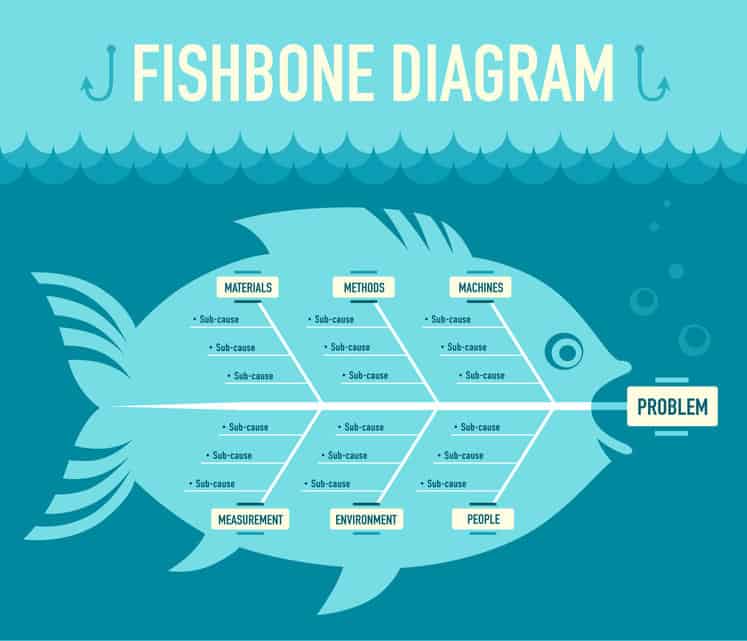One technique that is extremely useful to gain a better understanding of the problems before determining a solution is problem analysis.
Problem analysis is the process of understanding real-world problems and user’s needs and proposing solutions to meet those needs. The goal of problem analysis is to gain a better understanding of the problem being solved before developing a solution.
There are five useful steps that can be taken to gain a better understanding of the problem before developing a solution.
- Gain agreement on the problem definition
- Understand the root-causes – the problem behind the problem
- Identify the stakeholders and the users
- Define the solution boundary
- Identify the constraints to be imposed on the solution
Table of Contents
Gain Agreement on the Problem Definition
The first step is to gain agreement on the definition of the problem to be solved. One of the simplest ways to gain agreement is to simply write the problem down and see whether everyone agrees.
Business Problem Statement Template
A problem statement defines the problem faced by a business and identifies what the solution would look like. The problem statement can provide the foundation of a good product vision
A helpful and standardised format to write the problem definition is as follows:
- The problem of – Describe the problem
- Affects – Identify stakeholders affected by the problem
- The results of which – Describe the impact of this problem on stakeholders and business activity
- Benefits of – Indicate the proposed solution and list a few key benefits
Example Business Problem Statement
There are many problems statement examples that can be found in different business domains and during the discovery when the business analyst is conducting analysis. An example business problem statement is as follows:
The problem of having to manually maintain an accurate single source of truth for finance product data across the business, affects the finance department. The results of which has the impact of not having to have duplicate data, having to do workarounds and difficulty of maintaining finance product data across the business and key channels. A successful solution would have the benefit of providing a single source of truth for finance product data that can be used across the business and channels and provide an audit trail of changes, stewardship and maintain data standards and best practices.
Understand the Root Causes Problem Behind the Problem
You can use a variety of techniques to gain an understanding of the real problem and its real causes. One such popular technique is root cause analysis, which is a systematic way of uncovering the root or underlying cause of an identified problem or a symptom of a problem.
Root cause analysis helps prevents the development of solutions that are focussed on symptoms alone.
To help identify the root cause, or the problem behind the problem, ask the people directly involved.
The Ishikawa diagrams

Another popular technique to compliment and understand the problem behind a problem is the 5 whys methods

The primary goal of the technique is to determine the root cause of a defect or problem by repeating the question “Why?”. Each answer forms the basis of the next question. The “five” in the name derives from an anecdotal observation on the number of iterations needed to resolve the problem.
Identify the Stakeholders and the Users
Effectively solving any complex problem typically involves satisfying the needs of a diverse group of stakeholders. Stakeholders typically have varying perspectives on the problem and various needs that must be addressed by the solution. So, involving stakeholders will help you to determine the root causes to problems.
Define the Solution Boundary
Once the problem statement is agreed to and the users and stakeholders are identified, we can turn our attention of defining a solution that can be deployed to address the problem.
Identify the Constraints Imposed on Solution
We must consider the constraints that will be imposed on the solution. Each constraint has the potential to severely restrict our ability to deliver a solution as we envision it.
Some example solution constraints and considerations could be:-
- Economic – what financial or budgetary constraints are applicable?
- Environmental – are there environmental or regulatory constraints?
- Technical – are we restricted in our choice of technologies?
- Political – are there internal or external political issues that affect potential solutions?
Conclusion – Problem Analysis
Try the five useful steps for problem solving when your next trying to gain a better understanding of the problem domain on your business analysis project or need to do problem analysis in software engineering.
The problem statement format can be used in businesses and across industries.
By understanding the real-world problems and user’s needs you will determine better solutions that address those needs. Problem analysis compliments other business analysis techniques


